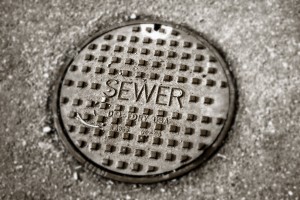On February 25, the NEOSCC Board will be voting on the the Vibrant NEO 2040 Vision, Framework and Action Products. With just under 40 days to the vote and 41 initiatives in the vision, we thought it would be good to create a countdown to the vote. Everyday over the next 5 weeks, we will be sharing an “Initiative A Day” with you so you can gent a better understanding of the vision and framework! If you would like to read all of the Initiatives, you can download them here Vibrant NEO_Recs&Init_010114.
These recommendations, initiatives, and products, are not one-size-fits all and some aspects of the initiatives won’t be applicable everywhere in the 12-county region. The Vibrant NEO 2040 Vision, Framework and Products are intended inspire and guide decision-making at the Metropolitan Planning Organization (MPO), Council of Government, and local levels to ensure that land use, transportation, and environmental considerations are simultaneously addressed by their processes. Ultimately, the implementation of Vibrant NEO 2040 is up to Northeast Ohio’s communities and residents. But regardless of the applicability of each initiative to any particular part of the region, the goal for each community within the Vision is the same: stability, prosperity, and a high quality of life for all of its residents.
Recommendation 1: FOCUS NEW RESIDENTIAL AND COMMERCIAL DEVELOPMENT ON SITES WITHIN ESTABLISHED COMMUNITIES
![sewer]() Initiative 1.5: Require the users of new sewer extensions that serve previously unsewered areas to pay the full cost of service.
Initiative 1.5: Require the users of new sewer extensions that serve previously unsewered areas to pay the full cost of service.
WHAT THIS MEANS. Sanitary sewer and wastewater service is a major determinant of regional development patterns. Sanitary sewer is unique as it is a major infrastructural expense that is borne mostly, even entirely, by local governments: capacity enhancements to roads are partially financed by federal funds passed through Metropolitan Planning Organizations; and electric power, natural gas, and water are mostly covered by separate public and investor-owned utilities. . Depending on whether the local government unit is a member of a regional sewer district, municipal liabilities could range from installation and maintenance of local sewer and stormwater pipes to construction and maintenance of an interceptor (trunk) line and wastewater treatment facilities.
Development of new wastewater infrastructure capacity is typically financed through issuance of bonds by the responsible jurisdiction, and paid back through the fees collected from users. A large body of case law has taken shape around the question of how the cost burden of new wastewater infrastructure can be passed on to users. At issue is whether extensions to capacity constitute a good enjoyed by all users of the system, regardless of location, or whether that extension provides a disproportionate benefit to the new users. Ohio state law is clear on the subject: local governments and sewer districts are empowered to collect special assessments related to the capital costs of new improvements to water and sewer infrastructure for new users.
Sanitary districts in Ohio generally collect use fees on a graduated schedule that is based on the underlying land use. A similar approach could be built into the capital cost fee structure to more fairly capture the impact of the addition of a particular land use (and in the case of residential uses, density of housing units) to the sanitation network. Research supports the validity of such fee schedules, particularly on residential density: studies show, on average, that housing development with greater than six gross housing units per acre is 20% to 30% less costly to serve with wastewater and stormwater than lower density developments (citation: Nelson, Arthur C. et al, A guide to impact fees and housing affordability, Washington: Island Press, 2008, p. 119). Establishing capital cost fee schedules based on use type and density would fall within criteria established by the Ohio Revised Code, which provides for districts to assess properties based on proportional benefit.
WHY THIS IS IMPORTANT. Capitalizing the cost of wastewater infrastructure capacity expansion into the fees assessed to new users represents a fair distribution of the economic burden associated with growth, especially since the jurisdiction as a whole assumes the long-term liability of maintaining the infrastructure. This would not only help with maintaining the fiscal solvency of the system, but also send a clear signal to the market that the type and intensity of use matters in terms of real cost to the jurisdiction.
GETTING IT DONE. Entities that own and operate local sanitation and wastewater treatment districts must ultimately implement this initiative through legislative or administrative actions specified by their governing statutes. While of moderate legal and administrative difficulty, implementing this initiative will require a shift in perspective from one regarding extensions of sewer lines as a strategy for “growing” the fee base supporting the system, to one acknowledging that growing the system for its own sake may only hurt its solvency in the long run depending on the type and intensity of land use. Regional planning partners such as Northeast Ohio’s Areawide Planning Agencies and the Eastgate Council of Governments can play an important catalyzing role by leveraging their state-mandated regional wastewater planning functions, perhaps using the next occasion of such planning to survey the region’s sanitation districts to better understand the range and distribution of practice, and engage them on the necessity of policy change (citation: http://www.epa.ohio.gov/dsw/mgmtplans/208FacilityPlanningGuidelines.aspx).
Lead |
Sanitary Sewer Districts; Municipalities, Townships, Counties |
Target Community |
Cost risk areas |
Implementation Complexity |
Moderate |

